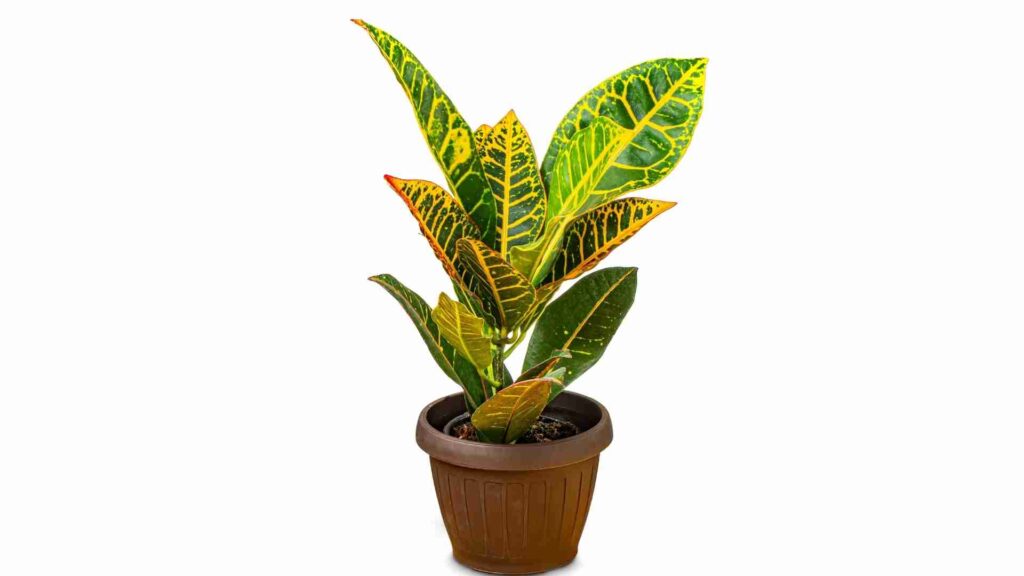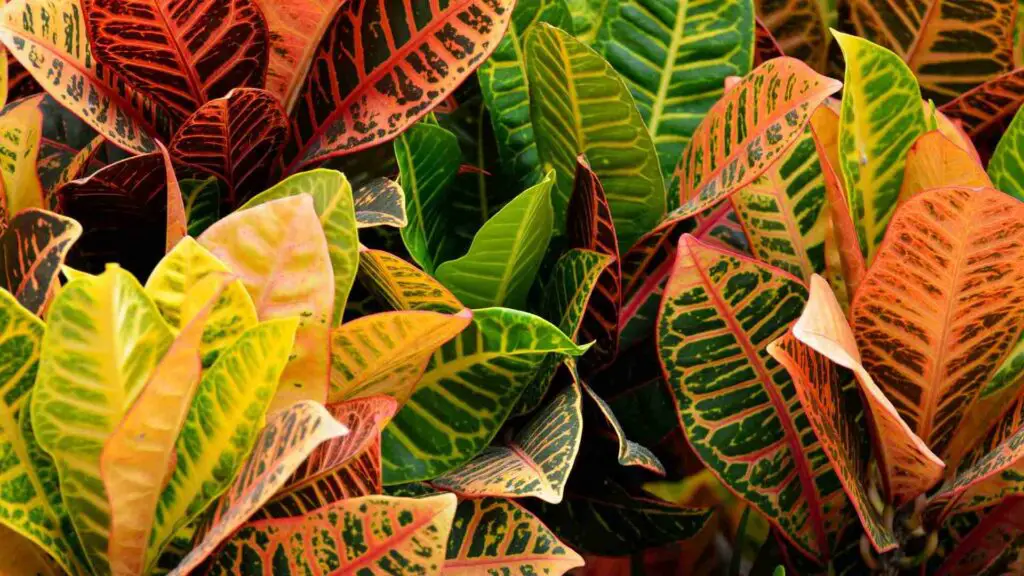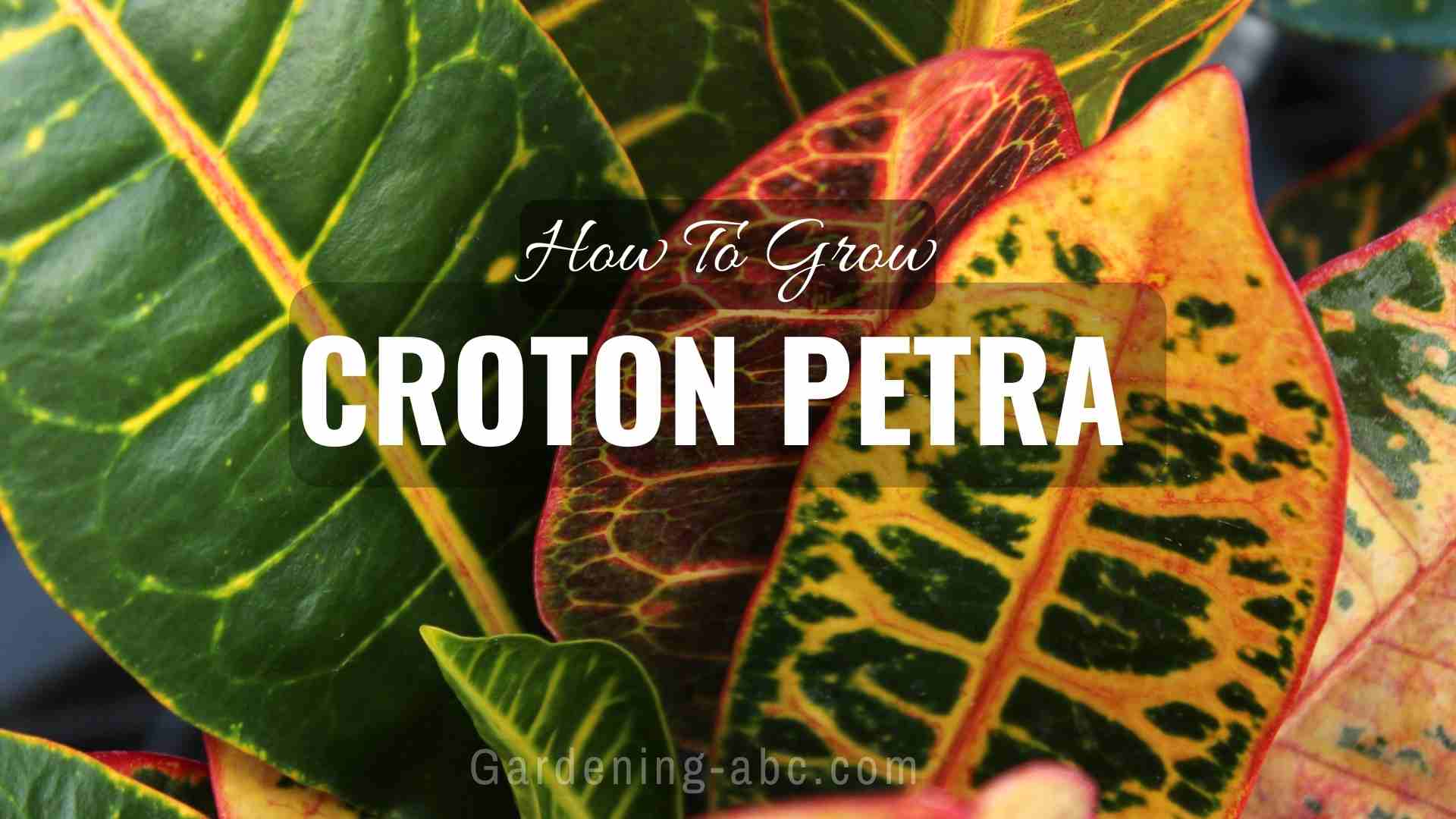We use affiliate links to run our site. When you buy through links on our site, we may earn an affiliate commission, without any added cost to you. Learn more
Croton ‘Petra’ Plants are beautiful, glossy-leaved plants that are native to tropical regions. They are grown for their colorful foliage and can be found in a variety of colors, including green, yellow, orange, and red.
Croton ‘Petra’ Plants are easy to care for and make an excellent addition to any home or office. In this post, we will discuss every detail about growing a croton petra plant in your garden.
What is a Croton ‘Petra’ Plant?
The Croton ‘Petra’ plant is a member of the genus Croton, which comprises approximately 750 species of trees and shrubs in the family Euphorbiaceae.
The plant is native to eastern and southeastern Asia, from India to China and Taiwan, and is a popular houseplant in temperate regions.
Of late they have been introduced to many other parts of the world as an ornamental plant.
Size and growth of the plant:
The croton petra plant is a beautiful, unique plant. They are typically small to medium-sized, with an average height of 2-3 feet, and have a slow growth rate that can take several years to reach their full size.
These plants are native to the tropical regions of Asia and Africa and prefer warm, humid climates.
They do not tolerate cold weather well and can be damaged by frost. Croton petra plants need full sun to partial shade and well-drained soil.
The leaves of the croton petra plant are very large and can be up to 18 inches long and are also very colorful, with shades of orange, bronze, purple, green, pink, and red-orange.
The flowers of a croton petra plant are typically found in clusters of 3-5 blooms. The flowers themselves are small, with four petals that range in color from white to yellow.
The center of the flower is often a deep red or purple, which contrasts nicely with the lighter colors of the petals.
How to Care for a Croton ‘Petra’ Plant:
Croton Petra plants are beautiful, unique houseplants that can brighten up any home. Though they’re sometimes thought of as difficult to care for, with a little bit of knowledge they can be easy to maintain.
Here are a few tips on how to keep your Croton Petra healthy and happy.
How much light do they need:
Croton ‘Petra’ plants are known for their ability to tolerate lower light conditions, making them a popular indoor plant. However, they will thrive in moderate to bright indirect sunlight.
For best results, provide 4-6 hours of indirect sunlight each day.
How to Water the plant
Check the top 1-2″ of the soil before watering. If the soil is dry, it’s time to water. Use lukewarm, filtered water to avoid shocking the plant. Water until the soil is evenly moistened and allow the excess water to drain away.
Humidity:
Croton ‘Petra’ plants are native to humid conditions and will do best when humidity levels are high.
If you live in a dry climate, you may need to use a humidifier or pebble tray to increase the humidity around your plant.
Misting your Croton ‘Petra’ plant with water can also help to increase the humidity levels around it.
Ideal Temperature for growing croton petra:
Croton petra plants are best grown at temperatures between 15 and 27 degrees Celsius. They should be kept away from cold air or drafts in the winter, as this can damage the plant.
Fertilizer:
Petra is a slow-growing plant, so it doesn’t need a lot of fertilizer. Once per month is plenty. You don’t need to fertilize the plant in winter.
Work with organic fertilizers. They work best for croton Petra plants. Something like fish emulsion or kelp meal diluted in water will work well. Just be careful not to overdo it – too much fertilizer can burn the roots of your plant.
When to Repot The Plant:

Croton Petra plants are beautiful, unique houseplants that can brighten up any home. They are easy to care for and don’t require much attention.
However, like all plants, they will eventually outgrow their pot and need to be repotted.
Croton Petra plants usually need to be repotted every two to three years, and the best time to do this is in the spring. When repotting, use a pot that is slightly larger than the previous one and has drainage holes.
After repotting a croton tetra plant usually shed off a few leaves. This is typical and you don’t need to worry about this. Within a few weeks, it will show new growth.
How to Clean your croton tetra plant:
Croton Petra plants are known for their vibrant, multi-colored leaves. If your Croton plant is looking a little lackluster, it may just need a good cleaning.
To clean the plant, start by wiping down the leaves with a moist cloth. Once the leaves are dust-free, spray them lightly with water. Be sure to avoid getting the leaves too wet, as this can cause damage.
Allow the plant to air dry completely before putting it back in its spot. With regular cleaning, your Croton Petra will stay healthy and vibrant for years to come!
Pruning:
Croton Petra plants are known for their glossy, green leaves and can grow up to 10 feet tall.
Although they are a low-maintenance plant, they do require some pruning. Pruning is an important part of keeping your Petra plant healthy.
Pruning croton petra plants is not difficult, but there are a few things you should keep in mind to ensure that your plant stays healthy and looks its best.
Start by removing any dead or dying leaves, then trim back any long or lanky stems.
Next, cut back any branches that are crossing over or rubbing against each other – this will help to promote air circulation and prevent disease.
Finally, shape the plant by trimming back any stray branches or stems that are growing outside of the desired shape.
Always use clean, sharp shears when pruning your croton petra plant, and be sure to disinfect them between cuts to avoid spreading disease.
Regular pruning encourages bushier growth and prevents your croton petra plant from becoming too tall and leggy.
Pruning is best done in the springtime, but you can also do it in the summer if necessary.
How To Propagate Croton Plants?
Croton plants are typically propagated through stem cuttings taken from new growth. The stem cuttings should be 4-6 inches long and should have several leaves.
Cut the stem at a 45-degree angle just below a leaf node. Remove the lower leaves from the cutting, leaving 2-3 leaves at the top.
Dip the cutting in rooting hormone and plant it in a well-drained potting mix.
Common Issues of the Croton ‘Petra’ Plant
Croton ‘Petra’ plants are popular houseplants known for their vibrant colors and ability to thrive indoors with little maintenance. However, even the hardiest of plants can experience problems from time to time.
Some common issues faced by Croton ‘Petra’ plant owners include
- Loss of color on leaves,
- Limp or drooping leaves, and
- Dropping leaves.

Loss of color on leaves:
The Croton Petra is a popular houseplant known for its vibrant, multi-colored leaves. However, some owners have reported that their plants are losing their color, with newer leaves being predominantly green.
There are a few possible reasons for this loss of color. One is that the plant is not getting enough light. Croton Petra needs bright, indirect sunlight to maintain its vivid colors. If your plant is not getting enough light, move it to a brighter spot.
Another possibility is that the plant is not receiving adequate nutrients. Make sure you are fertilizing regularly and using a high-quality fertilizer formulated for tropical plants. If you think your plant might be suffering from nutrient deficiencies, you can also try giving it a foliar feed (a liquid fertilizer sprayed on the leaves).
Limp or drooping leaves
Sometimes the leaves of your croton plant may droop or become limp. This can be either a sign of under-watering or over-watering. Both problems can often be remedied by simply adjusting the amount of water your plant receives each week.
If you see your croton petra plant with limp or drooping leaves, first check the soil to see if it is too wet or too dry.
If the soil is dry and you think you are underwatering, try giving the plant more water.
If on the other hand the soil is a bit soggy and the leaves are limp or drooping chances are you are overwatering your plant. Change the watering schedule and make it less frequent. Also, reduce the amount of water you are giving to the plant.
Dropping leaves:
If your Croton Petra is dropping leaves, it’s a sign that something is wrong. The most common culprits are inconsistent soil moisture and inadequate light.
If your Croton isn’t getting enough water, the leaves will start to turn yellow and drop off. Make sure you’re watering it regularly and giving it enough water when you do. If the soil is too dry, the leaves will turn brown and drop off.
If your Croton isn’t getting enough light, it will start to stretch and the leaves will drop off. Move it to a brighter spot and make sure it gets at least six hours of direct sunlight a day.
Croton Petra Complimentary Plants:
If you’re looking for plants that will complement your Croton ‘Petra’ plant, consider mums, asters, pansies, and black-eyed Susan. All of these plants are annuals that thrive in full sun and well-drained soil.
They also have similar watering needs as the Croton ‘Petra’ and can tolerate periods of drought.
When planting, be sure to space the mums, asters, pansies, and black-eyed Susan at least 18 inches apart to allow for proper air circulation and prevent disease.
With a little care, you’ll have a beautiful garden that will bloom all season long!
Petra Crotons Pests Or Diseases
The Petra Croton plant is susceptible to a number of common pests and diseases. These include Aphids,
- Scale insects,
- Whiteflies, and
- Mealybugs.
All of these pests can be controlled with regular applications of insecticidal soap or neem oil.
The plant is also susceptible to fungal diseases such as
- Powdery mildew, and
- Root rot.
To prevent these diseases you need to take care of the soil and make sure it has proper drainage and aeration. Also, increase air circulation around the plant to prevent any fungal outbreak.
Frequently Asked Questions:
-
How Fast Do Tetra Crotons Grow?
Petra crotons are generally a slow-growing plant. However, this can depend on quite a few factors including sunlight, fertilizer, water, and humidity. Being tropical plants they need sunlight and humidity to grow properly.
To make sure you get the maximum growth rate, follow the instructions mentioned in this post. -
Are Croton Tetra Plants Toxic?
A croton tetra plant can be toxic. It can induce oral and gastrointestinal sickness. The plant contains a chemical called Croton oil, which is toxic.
Symptoms of croton tetra poisoning include drooling, vomiting, and diarrhea. The severity of the symptoms depends on the amount of croton oil that is ingested.
Croton oil is also a skin irritant. Always wear gloves when working with the plant. If you come in contact with the plant, wash your hands immediately with soap and water. -
Is Petra Croton Invasive?
Petra Crotons are not considered invasive plants. This is because they do not have the ability to spread aggressively and displace native plant species.
Additionally, Petra Crotons are not able to survive in areas with harsh climatic conditions. Therefore, they are not a threat to native ecosystems. -
Does Petra Croton Clean The Air?
The Petra Croton is an excellent air purifier. Its leaves help to remove toxins and pollutants from the air, making it a great plant for indoor use. Additionally, the Petra Croton is easy to care for and does not require much maintenance.
Conclusion:
In conclusion, growing croton tetra plants in the garden is a great way to add color and interest to your landscape. These tough, easy-to-grow plants are perfect for beginners and will provide years of enjoyment with minimal care.
They tolerate a wide range of conditions and can even be grown in poor soil. They are also drought tolerant and will survive in most climates.
With a little planning and preparation, you can have a beautiful garden that will be the envy of your neighbors.
I hope this post was helpful to you. Feel free to share the post with others too.
Amazon and the Amazon logo are trademarks of Amazon.com, Inc, or its affiliates.

Hi there! My name is Prasenjit and I’m an avid gardener and someone who has grown a passion for growing plants. From my hands-on experience, I have learned what works and what doesn’t. Here I share everything I have learned.
